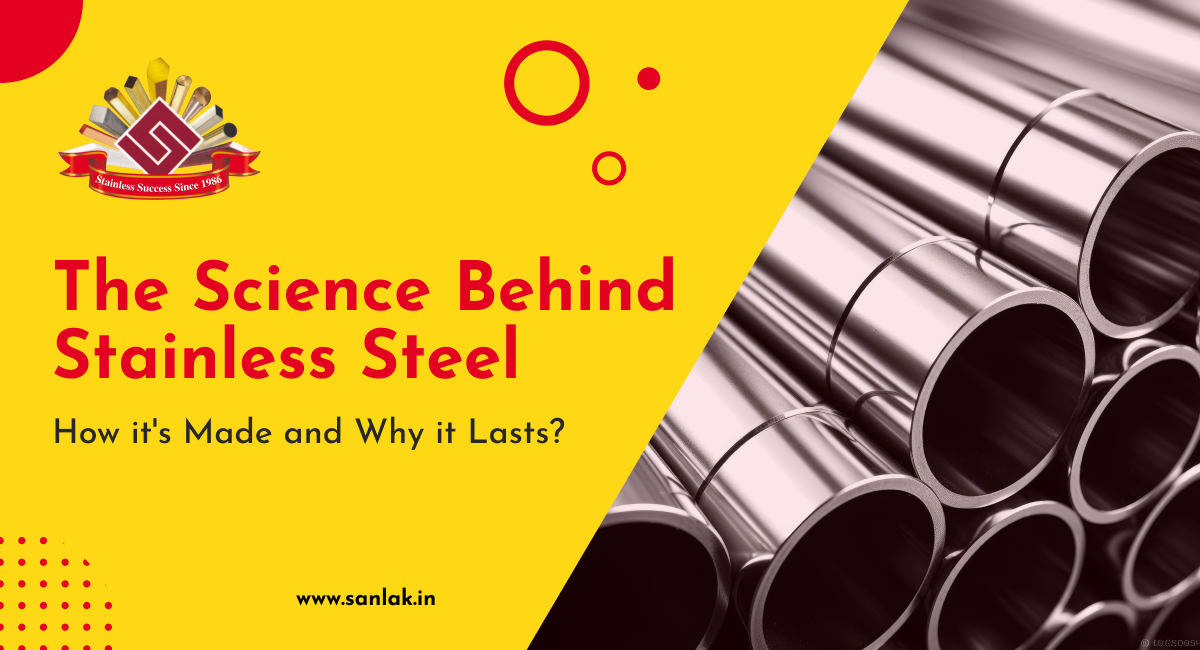
The Science Behind Stainless Steel: How It's Made and Why It Lasts?
Stainless Steel: More than just shiny. Let's uncover the science behind its durability and explore the process that transforms ordinary steel into this extraordinary metal.
Stainless steel is an essential part of our daily lives, even if we don't always notice it. This remarkable material is found everywhere, from the kitchen to the hospital, and its unique properties make it indispensable. But what makes it so special? How does it resist rust and corrosion? Let's dive into the world of Metal science and discover the secrets behind this remarkable material.
A Happy Accident: The Birth of Stainless Steel
In 1913, metallurgist Harry Brearley was working to enhance steel for gun barrels when he made an unexpected discovery. He found that adding chromium to the steel created a material that resisted rust and corrosion remarkably well. This was due to a protective layer that formed on the surface of the steel. Brearley's accidental breakthrough led to the creation of stainless steel, a versatile material now used in everything from kitchen utensils to modern architecture, revolutionizing the world of materials with its durability and sleek appearance.
Stainless Steel: From Raw to Remarkable
Turning raw materials into stainless steel involves a few key steps:
- Melting: Iron, carbon, and chromium are melted together in a furnace at high temperatures to create molten steel.
- Casting: The molten steel is poured into molds to form solid shapes like slabs or billets.
- Rolling: These solid shapes are reheated and rolled into thin sheets or long rods.
- Finishing: Finally, the steel is polished and cut to achieve its sleek, shiny appearance and durable qualities.
Each step is carefully controlled to transform raw elements into a versatile, rust-resistant material used in countless applications.
The Science of Strength and Shine in Stainless Steel
Stainless steel’s remarkable strength and shine come from its unique properties:
- Protective Layer: A thin, invisible layer of chromium oxide forms on the surface, protecting the steel from rust and keeping it shiny.
- Exceptional Strength: The blend of iron, chromium, and other elements gives stainless steel material its durability, making it resistant to extreme conditions and impacts.
- Polished Finish: Manufacturing involves polishing the steel to remove imperfections and enhance its reflective shine.
- Low Maintenance: The protective layer makes stainless steel easy to clean and resistant to stains and spots.
This combination of factors ensures stainless steel remains both strong and visually appealing over time.
Everyday Uses of Stainless Steel
Stainless steel is a key part of many everyday items:
- In the Kitchen: It's used in sinks, pots, pans, and utensils because it doesn't rust and is easy to clean.
- In Healthcare: Surgical tools and medical devices are made from stainless steel because it's resistant to corrosion and can be sterilized.
- In Construction: It’s used for building supports, facades, and fixtures due to its strength and durability in all weather conditions.
- In Transportation and Technology: Stainless steel is found in cars, airplanes, and gadgets like smartphones, valued for its toughness and resistance to wear.
Stainless steel’s combination of strength and versatility makes it a vital material in our daily lives.
Eco-Friendly and Economical
Stainless steel is not only a stylish and durable material but also a smart choice for the environment and your wallet. Its eco-friendliness shines through its recyclability, longevity, and energy-efficient production process. On the economic front, stainless steel offers long-term savings due to its durability, low maintenance needs, and excellent resale value. By opting for stainless steel, you're not just selecting a product; you're making a conscious decision to reduce your environmental impact and maximize your investment.
Innovations and Future Trends
Stainless Steel: The Future is Bright
Stainless steel is advancing with some exciting new trends:
- Advanced Manufacturing: Technologies like 3D printing are creating complex stainless steel components with incredible precision.
- Smart Features: Technology is adding sensors to stainless steel to monitor things like temperature and stress, improving safety and efficiency.
- Self-Healing Steel: Scientists are developing coatings that allow stainless steel to repair itself.
- Eco-Friendly Innovations: Recycled stainless steel is becoming more common without sacrificing quality.
- Expanding Applications: From colorful stainless steel to medical implants, the possibilities are endless, Stainless steel is available in various forms, including stainless steel tubes and stainless steel pipes, widely used in construction and industrial applications.
The future of stainless steel is exciting and full of potential.
Conclusion: The Lasting Legacy of Stainless Steel
Stainless steel is truly remarkable when you see how it's made and why it lasts. Its special mix of metals and clever production methods give it outstanding strength and resistance to rust, making it perfect for everything from kitchen tools to high-tech gadgets.
Stainless steel has a bright future. It’s strong, long-lasting, and good for the planet, companies like Sanlak are leading the way with new and better ways to use stainless steel. Let's work together to make the most of this amazing material.
